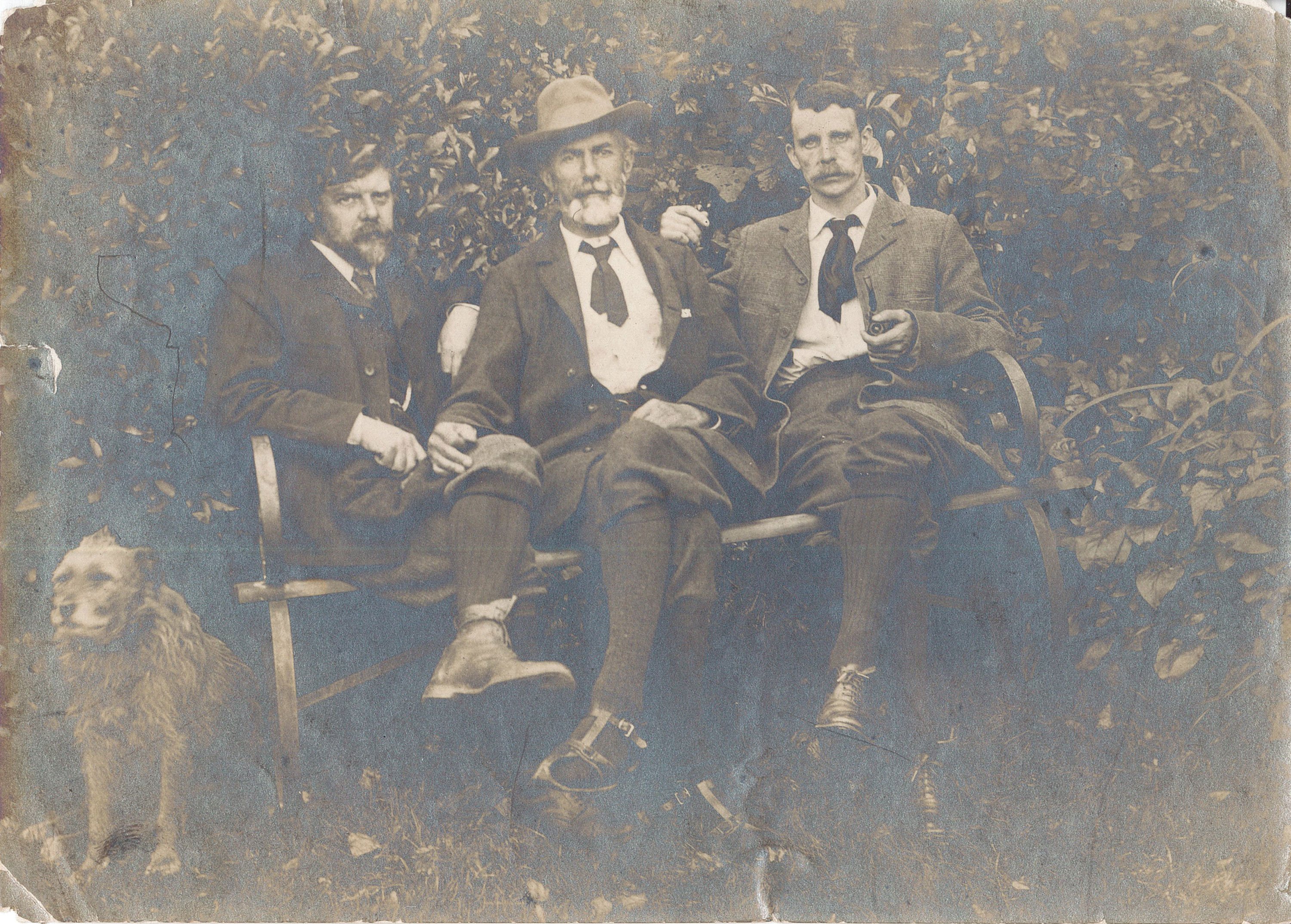Millthorpe and Edward Carpenter
Rarely has a single house been the site of such important political and cultural developments as Millthorpe. The house was built in 1883 by Edward Carpenter, a pioneer of LGBTQ rights, women’s rights and environmentalism.
Carpenter was also one of the founders of the Labour movement, a poet and philosopher. Millthorpe is set in a hamlet on the edge of the Peak District National Park and was a model for a new way of living with nature.
Edward Carpenter
In a time when male homosexual acts were illegal, Carpenter lived openly with his partner George Merrill. Their home became a refuge and place of pilgrimage for those challenging the customs of Victorian society. Among the visitors were the writer E M Forster (who modelled his novel Maurice on the working-class Merrill), the writer and artist William Morris and the poet Siegfried Sassoon.
Carpenter was born in 1844 into an affluent family in 45 Brunswick Square, Hove but moved away from his upbringing to travel the north of England, delivering lectures to working people. He decided to settle in rural Derbyshire where he bought a small-holding and built a house.
Carpenter’s lifestyle
Carpenter believed that a future society must change hearts as well as heads. Millthorpe was a testbed for a simple life. It was a place where craft-making and market gardening were promoted as a gentler alternative to an alienated industrial life for slum-dwelling workers.
Carpenter advocated free love, vegetarianism and nudism and introduced sandals to England – all radical for their time. He would take daily skinny dips in a stream at Millthorpe. He was regarded as an eccentric crank by some political commentators at the time, an attitude which underestimates Carpenter’s influence on society today.
Carpenter advocated sexual liberty around the time of the Oscar Wilde trials and increasing persecution. The 1885 ‘Labouchère Amendment’ had further criminalised male homosexuality. Carpenter’s 1906 book, The Intermediate Sex argued that, instead of being shameful or unnatural, gay relationships were a positive trait.
His theories regarding sexuality were informed by the writings of the American poet Walt Whitman and early sexologists such as George Ives, Havelock Ellis and the German Magnus Hirschfeld. His writings were the foundation of the steady fight back against discrimination.
Millthorpe’s architecture
Less well known than Carpenter’s writings is Millthorpe’s influence on architecture and town planning.
Sheffield architect Raymond Unwin frequently visited Carpenter and was inspired by his way of life. He admired the design of the house and its cottage vernacular with its rustic front door and small casement windows placed high up at the eaves line.
The grey stone and slate-roofed house was one room deep without hallways and was unfussily furnished inside. Carpenter argued for simplified interiors that could be easily cleaned. At ground level he advocated stone floors that could withstand the tramp of muddy boots, overlaid with rugs.
We shall show in ourselves that the simplest life is as good as any. We will so adorn it that the rich and idle shall enviously leave their sofas and gilded saloons and come join hands with us in it.
Millthorpe inspires designers
Together with fellow architect Barry Parker, Unwin went on to design Letchworth Garden City and Hampstead Garden Suburb (from 1906). They also designed cottage-style council housing with gardens that helped transform British attitudes to housing design after the First World War. Indirectly then, Carpenter helped to shape the garden city movement, an influence that has been largely overlooked.
Another frequent visitor, Charles Ashbee, went on to be an eminent practitioner of the emerging Arts & Crafts architecture and founder of the Guild and School of Handicraft that promoted an alternative to machine-made uniformity. Although he most certainly desired other men, Ashbee married and in 1902 moved the Guild to the Cotswolds, creating a like-minded community there for a short period.
Carpenter’s cultural influence
Carpenter’s influence achieved via his books and through friendships extended to figures as diverse as the writers W B Yeats, Virginia Woolf, Rupert Brooke and D H Lawrence, and the folk musicologist Cecil Sharp. Politically his supporters included Hugh Dalton, future Labour prime minster Ramsay MacDonald and Fenner Brockway.
Carpenter’s analysis and defence of same-sex desire later informed the new wave of lesbian and gay activists of the 1970s Gay Liberation Movement.





